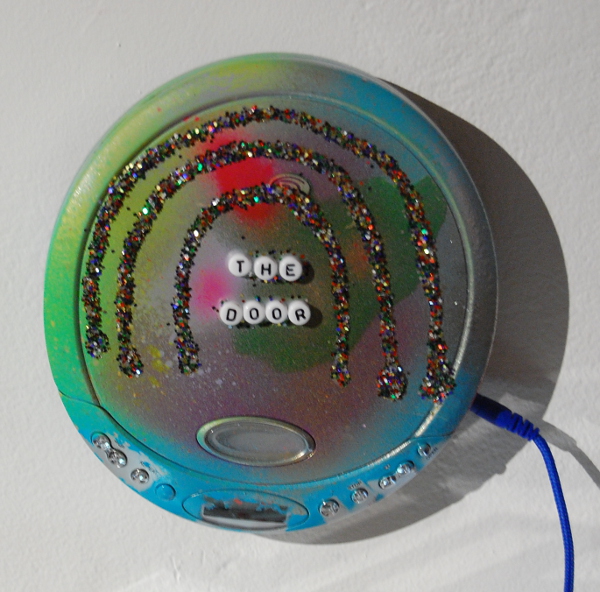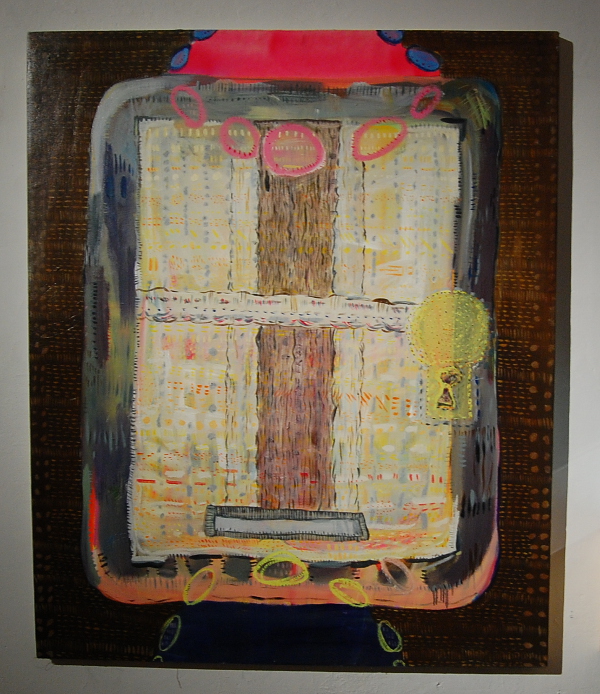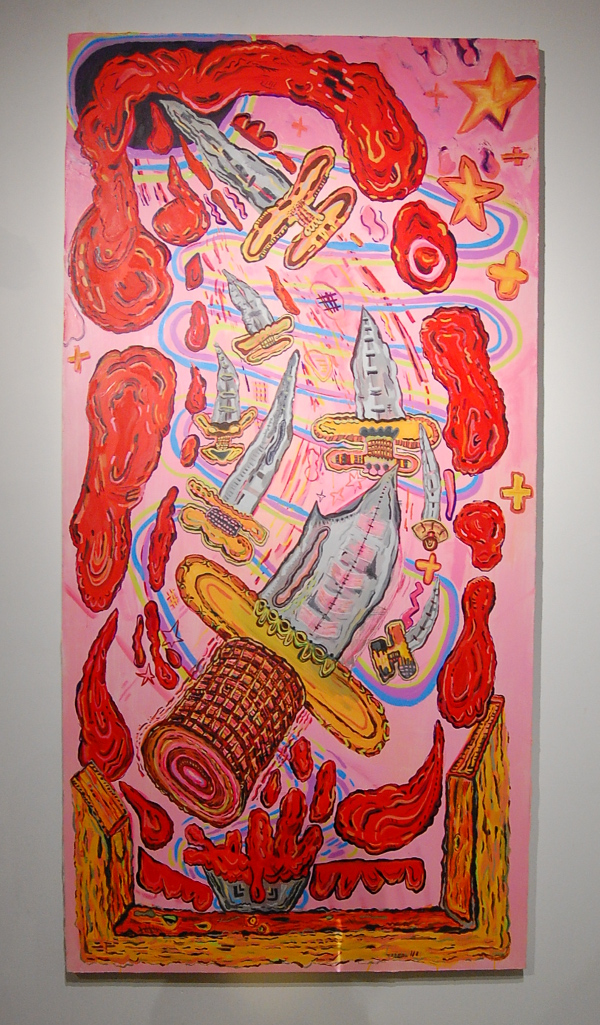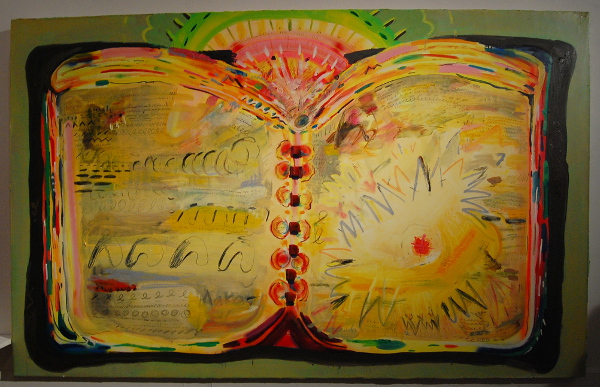
New Boon(e) curates friends and opens the floodgates of interpretation
On First Friday, March 6, New Boon(e) debuted a one night exhibition of painting and commentary among friends. The show “Forever” not only puts a new body of work by artist Kim Altomare on display, but provides accompanying audio analyses by curator and friend Anne Pagana, as well as a gallery tour and performance by Josh Beaver.
Altomare’s paintings are extremely fluid and quite alluring, and could very easily stand on their own for this exhibition. Each work is a symbolic abstraction focused on a specific object. Among these we find the door, the book, the paw and a slew of knives or “heavenly weapons.” With any artwork, however, once it leaves the studio and enters the gaze of audiences, curators and writers, it begins to take on meanings and interpretations that even the artist may not have intended. As such, alongside each painting we find a CD player containing audio commentary from Pagana.
One of the CD players with accompanying commentary.
Other than the obvious differences from your average show – namely bedazzled Discmans and headphones covered in paint, glitter and googly eyes – we also find the insights by Pagana to be somewhat different from what we might expect. Instead of a lofty stream of cultural references, Pagana’s criticism is very personal and intentionally biased towards Altomare by way of the pair’s friendship.
We are pulled into an intimate artistic exchange as the relationship between Altomare and Pagana is revealed. The dialogue here seems far more casual than many such conversations, and rightly so. Pagana speaks of the ‘love hours’ that go into any given creation, which on one hand could be true of any artist who spends significant time and energy exploring a medium or concept. On the other hand, as Altomare’s friend, Pagana is personally better equipped to speak on this topic, having seen the rewards and the challenges of the artistic process firsthand.
Kim Altomare, “The Door.”
In this exhibit, “The Door” is clearly both our starting point and our exit into understanding the work. Pagana calls this one of Altomare’s first mature pieces, and it is easy to see why she was so taken with it. On the tall canvas, we see the visage of a door superimposed over a brown background textured with roundish dashes and dots. Its edges are notably rounded, giving it the appearance of an iPad more than an entryway, but then again, how often are such devices our starting point for initiating or following up on our experiences?
Ethereal orbs crown the door’s top and drift before its bottom, investing themselves somehow in both beginning and end; ingress and egress. The doorknob and keyhole are spectral too, implying an ambiguity of both substance and action. How do we determine the precise instant something starts or finishes? Where exactly is the border between inside and out? Altomare embraces these enigmas and approaches them through pigments.
Kim Altomare, “Heavenly Weapons.”
Flying daggers crisscross a pink field in “Heavenly Weapons” as they slice through air and stab into the void. The black hole in the upper left corner seems simultaneously like a target the blades were launched at, and a gravitational force drawing them in. Globules of blood fall toward a bucket and platform below as bright yellow stars erupt near the top of the tall canvas. Whatever struggle is occurring, it seems like a righteous one, and although no people are present, the weapons bring an implied humanity to the table.
Kim Altomare, “The Book.”
Providing more intellectual and imaginative material in the face of knife fights and gateways, we come to the “The Book.” One of the more abstract images on display, this piece doesn’t offer much to work with, but what it lacks can be made up in the institution it represents: language. Words can convey stories, facts or feelings, as both Pagana and Beaver well know, and yet Altomare dodges them altogether. What she leaves us with instead is a glowing tome split wide open for the taking. The scribbled lines and modest splashes of color beckon us to fill in its contents ourselves, a figurative ‘blank canvas’ depicted through a fully painted final version. Altomare’s picture may be finished, but its interpretations are as varied as the stories we could write about it.
Through all of the artwork in “Forever,” we are given an introduction to a raw symbol constructed by Kim Altomare and left to our devices. Pagana and Beaver do their part to inform us as friends and collaborators, but they only direct us toward the limitless possibilities inherent in every image – here and beyond.
New Boon(e) is located at 253 N. 3rd St., Philadelphia; [email protected]; newboone.org.
Recent Content
-
Artsarticle ·
-
Artsarticle ·
-
Artsarticle ·




